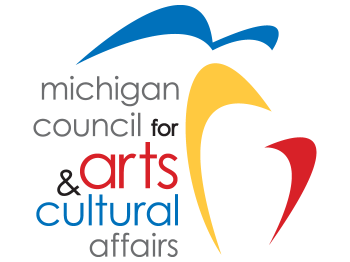By: Nate Bell, Ben Hazekamp, Michael Phua, Ryan VanderPloeg
Grand Rapids is a gem in Western Michigan, but it currently runs the risk of losing its luster. As the city has struggled to regain its footing after being rocked by the national recession, a lot rests on the decisions made at this crucial juncture. In order to create a future that allows for economic sustainability, Grand Rapids needs to consider how to attract and retain young talent.
The conventional wisdom on economic development for a region is that it needs to attract firms and industry in order to create economic opportunity and attract human capital, or talented individuals. However, recent studies indicate that the relationship is actually inverted and that the formation of human capital is a driving factor in regional development and the attraction and creation of firms and industries. In order for Grand Rapids to generate human capital, the barriers to entry into the community need to be lowered and opportunities in highly technical industries needs to be encouraged, giving individuals incentives to live and work in this community.
Grand Rapids faces a human capital problem because it has a declining population of young professionals. Young professionals are defined as college graduates between the ages of 25 and 34 with basic work experience and expertise in a defined body of knowledge. In Grand Rapids, the current level of residents with a Bachelor’s Degree or higher is 23.8% of the population . In the year 2001, Grand Rapids had a rate of 27.1%. This decrease should concern us because professional talent is a crucial component of an economy’s human capital stock and plays a role in both production and technological advancement, such as improved means of manufacturing, construction, or cutting edge technological innovation.
Retaining young professional talent and attracting talent to a city is not only beneficial for a city’s workforce, but also improves the city’s economy by providing the means by which advancement both in production and technology can occur. Losing talent or possessing a deficit of talent, in contrast, is harmful to a city’s economy. Dr. Murat Iyigun, a professor of economics at the University of Colorado, notes that the level of technology and production which one workforce generation has access to is determined by the professional and entrepreneurial capital of the previous generation. Thus, an economy is, in part, reliant on its workforce to continue to innovate and improve itself, and this is aided by young professional talent, which can provide the necessary skills to create opportunities for advancement.
“Talent is associated with diversity, as diverse and open environments attract high-human capital individuals. Diversity is directly associated with talent and also with concentrations of high-technology industry. High technology industry is attracted to places with high levels of human capital and high levels of diversity. Talent and high-technology industry work independently and in concert to generate higher regional incomes," said Richard Florida, a prominent scholar of cities and economic development.
The missing parts in Grand Rapids causal chain are apparent when compared to another city that has a roughly similar economic history to Grand Rapids: Madison, Wisconsin. Madison offers an interesting comparison because, in many ways, it is the type of community that Grand Rapids is aspiring to be. Madison is a city that is heavily invested in education, with several universities, such as the state's flagship campus of the University of Wisconsin. Grand Rapids has also begun to invest heavily in education with downtown satellite campuses springing up every year and Grand Valley State University just outside the city. Like Grand Rapids, Madison is a regional transportation hub and a regional health center, and both cities have roughly the same population size. One significant difference between the cities is Madison's distinction as the state capital.
Perhaps the most important difference between the two communities is their level of education attainment. Nearly half of Madison’s adult population has earned at least a Bachelor’s Degree compared to Grand Rapids with less than a quarter. This results from three major industries with Madison: the education industry; the professional, scientific and technical services industry; and the public administration industry. Within Madison, roughly 8.1% of the population works in the professional scientific or technical services fields (second only to education). As a comparison, only 4.5% of Grand Rapids’ population works in these fields. In keeping with Florida’s research, the case of Madison shows that the presences of technical industries are essential for the retention of talent in a region.
In Richard Florida’s work, he identifies diversity as the single most important factor to the retention and attainment of talent. According to Florida, “the presence of a relatively large gay population thus functions as a signal indicator of a region that is very open to various other groups." There is a strong correlation between a larger gay, and thus diverse, population and the attraction of talent. In Madison, 1% of the population is a gay or lesbian household (self-reported same-sex unmarried-partner households) compared to 0.7% of the population in Grand Rapids. Although the difference in percentages is not large, in actuality, Madison has 2,332 gay and lesbian households, roughly 1,000 more than Grand Rapids with about 1,316. Diverse communities have lower barriers to entry for human capital; thus, they are more capable of attracting and retaining talent.
While Grand Rapids has struggled with the attraction and retention of talent, there are many organizations throughout the greater Grand Rapids area that are focused on developing the right environment for economic sustainability. One of the most important organizations is Right Place, a non-profit organization that has helped raise more than $2 billion in capital to help generate more than thirty thousand jobs in Grand Rapids. Another great organization that is focused on promoting economic development throughout Grand Rapids is the Grand Rapids Community Foundation. They are focused on helping the city of Grand Rapids solve its most pressing problems. Lastly, there is Talent 2025, a relatively new organization that is focused on attracting talent into West Michigan.
The Rapidian, a program of the 501(c)3 nonprofit Community Media Center, relies on the community’s support to help cover the cost of training reporters and publishing content.
We need your help.
If each of our readers and content creators who values this community platform help support its creation and maintenance, The Rapidian can continue to educate and facilitate a conversation around issues for years to come.
Please support The Rapidian and make a contribution today.

